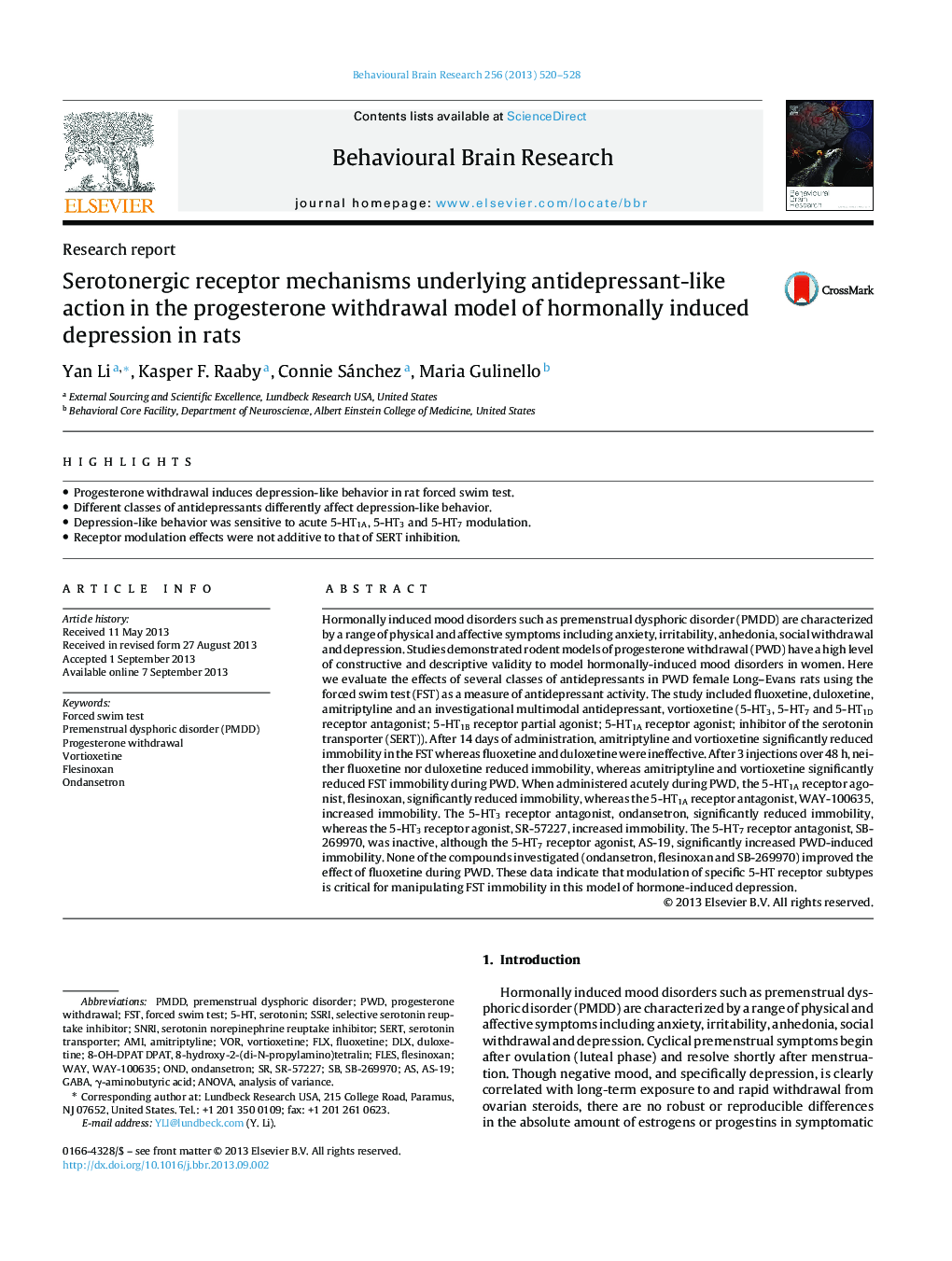| کد مقاله | کد نشریه | سال انتشار | مقاله انگلیسی | نسخه تمام متن |
|---|---|---|---|---|
| 6258865 | 1612976 | 2013 | 9 صفحه PDF | دانلود رایگان |
- Progesterone withdrawal induces depression-like behavior in rat forced swim test.
- Different classes of antidepressants differently affect depression-like behavior.
- Depression-like behavior was sensitive to acute 5-HT1A, 5-HT3 and 5-HT7 modulation.
- Receptor modulation effects were not additive to that of SERT inhibition.
Hormonally induced mood disorders such as premenstrual dysphoric disorder (PMDD) are characterized by a range of physical and affective symptoms including anxiety, irritability, anhedonia, social withdrawal and depression. Studies demonstrated rodent models of progesterone withdrawal (PWD) have a high level of constructive and descriptive validity to model hormonally-induced mood disorders in women. Here we evaluate the effects of several classes of antidepressants in PWD female Long-Evans rats using the forced swim test (FST) as a measure of antidepressant activity. The study included fluoxetine, duloxetine, amitriptyline and an investigational multimodal antidepressant, vortioxetine (5-HT3, 5-HT7 and 5-HT1D receptor antagonist; 5-HT1B receptor partial agonist; 5-HT1A receptor agonist; inhibitor of the serotonin transporter (SERT)). After 14 days of administration, amitriptyline and vortioxetine significantly reduced immobility in the FST whereas fluoxetine and duloxetine were ineffective. After 3 injections over 48Â h, neither fluoxetine nor duloxetine reduced immobility, whereas amitriptyline and vortioxetine significantly reduced FST immobility during PWD. When administered acutely during PWD, the 5-HT1A receptor agonist, flesinoxan, significantly reduced immobility, whereas the 5-HT1A receptor antagonist, WAY-100635, increased immobility. The 5-HT3 receptor antagonist, ondansetron, significantly reduced immobility, whereas the 5-HT3 receptor agonist, SR-57227, increased immobility. The 5-HT7 receptor antagonist, SB-269970, was inactive, although the 5-HT7 receptor agonist, AS-19, significantly increased PWD-induced immobility. None of the compounds investigated (ondansetron, flesinoxan and SB-269970) improved the effect of fluoxetine during PWD. These data indicate that modulation of specific 5-HT receptor subtypes is critical for manipulating FST immobility in this model of hormone-induced depression.
Journal: Behavioural Brain Research - Volume 256, 1 November 2013, Pages 520-528
